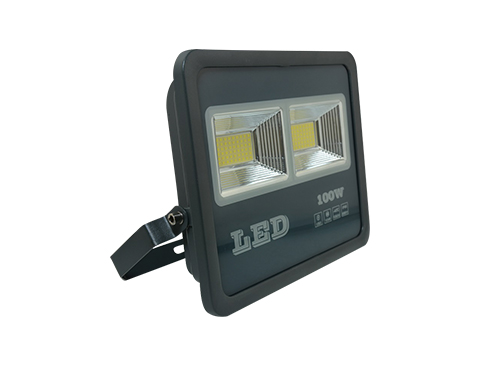

Inspection process First, we must eliminate false fault […]
Inspection process
First, we must eliminate false faults. There are intermittent flashes after turning off the light, which is not a quality problem of the light. The main reason is that the electrical circuit installation is not standardized and the switch is set to the neutral line. Just swap the zero wire and the live wire at the incoming end. If a switch with a neon lamp is used, the micro-flow path can still be formed after the lamp is turned off, or a double switch is installed through the cable, which will sometimes cause flashing after the lamp is turned off.
When repairing led energy-saving lamps, measures should be taken for safe applications: isolation transformers isolate the mains.
Secondly, the maintenance of LED energy-saving lamps that cannot be lighted normally: LED energy-saving lamps have components that are obviously damaged.
How to repair
It is common for the resonant capacitor C6 to breakdown (short-circuit) or withstand voltage reduction (soft breakdown). It should be replaced with a high-quality polyester or CBB capacitor of the same capacity with a withstand voltage above 1kV.
The lamp filament is open. If the lamp tube is not severely blackened, connect a 0.047μF/400V polyester capacitor to both ends of the broken filament lamp pin for emergency use.
R1 and R2 are open circuit or variable value (generally R1 is more likely to fail), replace it with a 1/4W high-quality resistor of the same resistance value.
The lights flickered continuously. If the lamp tube is not severely blackened, check D5 and D6 for false soldering or open circuit. If D5 and D6 are softly broken down or the filter capacitor C1 is leaking or defective, the light will flash continuously.
The lamp is difficult to light up, and sometimes the light tube can be lit or the light rolls when touched by hand. This may be due to insufficient capacity of C3 and C4 and unmatched.
If the filament of a single low-power energy-saving lamp turns red or glows after it is lit, check D1-D4 for soft breakdown, whether C1 is installed reversely or leaking electricity, and whether there is a short circuit in the power supply.
The magnetic cores of the choke coil L and the oscillation transformer B are broken. If you change the magnetic core alone, you should pay attention to three points:
(1) Use a magnetic core that meets the requirements, otherwise the inductance value of the choke may vary greatly, which will bury hidden dangers for energy-saving lamps;
(2) The magnetic gap should not be too small to avoid magnetic saturation;
(3) After padding the magnetic gap with a suitable pad, stick it with an adhesive and wrap it with a high-temperature flame-retardant tape to prevent loosening. In addition, the end of the same name of B cannot be connected wrongly.
When repairing electronic ballasts that use trigger tubes, check the bidirectional trigger diodes. This tube is generally of type DB3, and its bidirectional breakdown voltage is 32±4V.

Damage inspection
1. Although the fuse is not blown, the line at the entry point is not blown and the resistance is obviously damaged, the transistor will be damaged. This may first be caused by the aging of the lamp, followed by the poor use environment, and the loss of capacity by C1. For the first two cases, when replacing resistors and triodes, it is best to replace the matched C3 and C4 small electrolysis. For the latter, C3 and C4 do not need to be replaced. Because C1 works under high pressure, high-quality heat-resistant electrolytic capacitors must be used for replacement.
In the case of blown fuse and blown incoming line, if C1, Q1, and Q2 are intact, routine inspection and withstand voltage test must be carried out on D1-D4 one by one. Or replace all D1-D4 with high-quality products.
If C1 bursts, if it is accompanied by a blown fuse or a broken wire, all D1—D4 and C1 should be replaced.
If only the resistance-capacitance parts and triode on the side of Q2 are burned out, check whether C2 has broken down.
If the high-frequency transformer B is damaged, use ∮0.32mm high-strength wire to wind on the high-frequency magnetic ring of 10mm×6mm×5mm, T1 and T2 each have 4 turns; T3 is 8 turns (note the head and tail). Choke coil L: The lamp power is 5-40W, correspondingly between 1.5-5.5mH.
Interference from energy-saving lamps
The inductance of L or the capacitance of C2 can be adjusted so that it does not interfere with the remote control TV and can work safely.
Note
Led energy-saving lamps cannot be used in the circuits of dimming desk lamps, delay switches, and induction switches.
Avoid using led energy-saving lamps in high temperature and high humidity environments.
Like other lighting fixtures, led energy-saving lamps should not be turned on and off frequently.
Therefore, from a technical point of view, LED lamps and ordinary energy-saving lamps have their own advantages. In a certain period of time, they should not replace energy-saving lamps; but the cost of LED lamps will decrease with the continuous improvement of LED technology, and LED lamps will be more More and more users have accepted and replaced incandescent lamps and energy-saving lamps to a certain extent, but ordinary energy-saving lamps will also exist for a long time (because of its advantages in lighting angle and price). The country pays more and more attention to lighting energy saving and environmental protection, and has been vigorously promoting the use of LED bulbs.